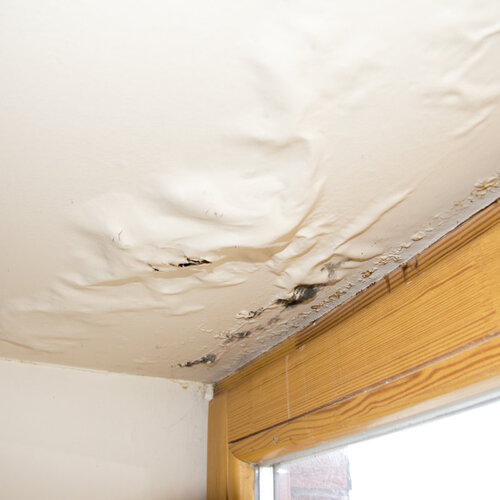Get to Know Half a Dozen Common Causes Behind Water Seepage Within Your Home
Get to Know Half a Dozen Common Causes Behind Water Seepage Within Your Home
Blog Article
Just about everyone has their unique way of thinking with regards to How to detect water leaks in your home.

Leakages not only trigger waste of water however can also cause unneeded damages to your home as well as advertise undesirable natural development. Water leaks might go unnoticed since many of the pipework in our residence is concealed. By looking and also recognizing for everyday circumstances that create leakages, you can secure your residence from future leakages and also unneeded damage. Today, we will check out six leak causes that might be creating your pipes to drip.
Instant temperature adjustments.
Extreme temperature adjustments in our pipelines can cause them to expand and contract suddenly. This expansion and tightening may cause splits in the pipelines, particularly if the temperature are listed below cold.
Rusty water systems
This could be the cause of staining or bending on your water pipelines. If our plumbing system is old, think about replacing the pipes because they are at a higher risk of corrosion than the more recent models.
Malfunctioning Pipeline Joints
The point at which your pipelines connect is often the weakest link in the waterline. Pipeline joints can deteriorate in time, leading to water leaks. Unfortunately, most of pipeline joints are not conveniently noticeable. If you have noisy pipes that make ticking or banging noises, particularly when the hot water is turned on, your pipeline joints are most likely under a great deal of stress. It is suggested to have your plumber examine your system once a year.
Trespassing roots
Most water leaks start outside the house instead of inside it. If you discover an unexpected reduction in water pressure, claim in your tap, take time to head out and also analyze your backyard. You could see wet spots or sinkholes in your backyard, and that could imply that tree origins are invading water lines triggering water to permeate out. You can have your plumber check for breach, particularly if you have trees or bushes near your building.
Poor Water Connectors
At times, a leak can be triggered by loose hose pipes and also pipes that supply your home appliances. Most of the time, moving is what triggers the loosened water Connections. You may discover when it comes to a cleaning maker, a tube may spring a leakage as a result of drinking throughout the spin cycle. In case of a water connections leak, you may see water running straight from the supply line or pools around your devices.
Obstructed Drains
Clogged drains could be aggravating and also inconveniencing, however they can in some cases wind up triggering an overflow leading to burst pipelines. Maintain removing any kind of products that may drop your drains that might clog them to avoid such aggravations.
All the above are sources of leaks but not all water leakages arise from plumbing leakages; some leakages may come from roof leakages. All leaks must be repaired promptly to avoid water damage.
Leakages not just trigger waste of water but can additionally create unneeded damage to your home and promote unwanted natural development. By understanding as well as looking for daily circumstances that cause leakages, you can secure your home from future leakages as well as unnecessary damages. Today, we will look at 6 leakage causes that might be causing your pipes to leak.
At times, a leakage can be triggered by loosened hose pipes and pipelines that provide your home appliances. In case of a water connections leak, you may see water running directly from the supply line or puddles around your home appliances.
How To Check For Water Leak In Your Home
How To Check for Leaks
The average household's leaks can account for nearly 10,000 gallons of water wasted every year and ten percent of homes have leaks that waste 90 gallons or more per day. Common types of leaks found in the home are worn toilet flappers, dripping faucets, and other leaking valves. These types of leaks are often easy to fix, requiring only a few tools and hardware that can pay for themselves in water savings. Fixing easily corrected household water leaks can save homeowners about 10 percent on their water bills.
To check for leaks in your home, you first need to determine whether you're wasting water and then identify the source of the leak. Here are some tips for finding leaks:
Take a look at your water usage during a colder month, such as January or February. If a family of four exceeds 12,000 gallons per month, there are serious leaks.
Check your water meter before and after a two-hour period when no water is being used. If the meter changes at all, you probably have a leak.
Identify toilet leaks by placing a drop of food coloring in the toilet tank. If any color shows up in the bowl after 10 minutes, you have a leak. (Be sure to flush immediately after the experiment to avoid staining the tank.)
Examine faucet gaskets and pipe fittings for any water on the outside of the pipe to check for surface leaks.
Undetected water leaks can happen without the home or business owner even realizing. If you suspect a water leak, but not able to find the source. It is time to contact a professional water leak detection service, The Leak Doctor.
How To Find a Water Leak In Your Home
https://www.leakdoctor.com/blog/How-To-Check-For-Water-Leak-In-Your-Home_AE197.html

Hopefully you liked our section on How Fast Water Damage Can Ruin Your Home. Thanks so much for taking time to browse our blog post. Are you aware of anybody else who is serious about the subject? Take a moment to share it. Thanks a lot for going through it.
Book Your Installation Report this page